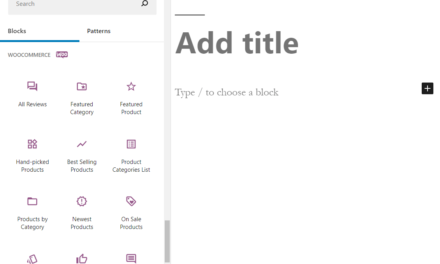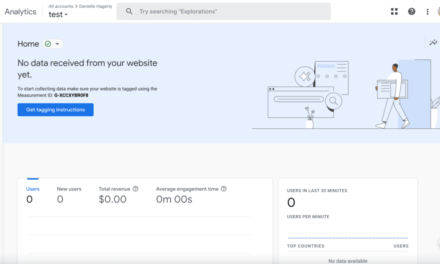Ecommerce isn’t the future of business, it’s the present.
Research predicts that, by the end of 2021, there will be more than 2 billion online customers. Add to this the fact that Covid-19 shifted how small businesses operate and you’ll understand why so many entrepreneurs are trying hard to adapt their brands to the digital economy.
This transition might be confusing for many, though. Turning your brick-and-mortar store into an online business isn’t only time-consuming, but expensive.
If you don’t do it right, you’ll waste so much energy and resources on a project that’s meant to fail.
Besides, as the number of existing eCommerce stores grows, competition will become fiercer and tighter.
If you want to stand out and get the most out of your resources, you must be strategic—you need a solid process.
To help you out, here are six steps you can take to start your online business without feeling overwhelmed.
1. Streamline your processes and get rid of needless steps
One of the main reasons people buy online is because, often, it’s easier than the traditional way.
By buying online, people avoid all the inconvenience involved with a brick-and-mortar business—getting dressed, driving to the store, looking for the product they need, waiting in line to pay, and then driving back home.
So, before we get into actually building your online business, start by streamlining all your processes and operations.
Define all the steps your customers need to take from the first contact point to the time they use the product. Then, decide which of them aren’t essential and remove them.
By getting rid of needless steps, you won’t only delight customers, but will also maximize revenue and productivity.
2. Choose the right marketplace to sell your products
People tend to equal online businesses to websites. When they think about starting an eCommerce company, they assume they need one.
Things have changed.
With so many marketplaces out there, a website isn’t always necessary, especially at the beginning. Some of the most popular marketplaces include Facebook Marketplace, Google Express, Ebay, Etsy and, of course, Amazon.
Most of these marketplaces offer free plans where you only pay a small commission for every sale you make, which is great to start on a low budget.
Now you might be wondering: with so many competitors, how can you stand out?
While there are many tactics you can use to beat your competitors, one of the best ways to start is by adjusting your pricing—making sure you aren’t selling products at a higher price than your competition.
Even though you could do it manually, we suggest you leverage the power of AI. For instance, you can use an Amazon repricer to update your prices automatically and repurpose that time on more crucial activities.
3. Always be promoting (but do it this way)
Once you choose a marketplace to sell your products, it’s time to promote your store. To do it, you can use a variety of methods—i.e. social media ads, search engine marketing, or influencers.
One of the best ways to start, though, is through comparison websites. When a popular source mentions your company, customers are more likely to trust you and, eventually, buy from you.
Besides, these websites tend to rank pretty well on search engines, which is a great way to get traction even if you’re starting.
For instance, take a look at Savvy Sleeper.
If you pay attention, you’ll notice a little message at the top that states: “We may receive financial compensation for products purchased through links or codes on this website.”
This means the products they’re selling run affiliate programs.
By launching an affiliate program where you pay these companies a referral fee for each sale they make, you could get promoted too.
The good news?
You can find comparison companies in almost any industry.
A quick Google search will help you find relevant sites to promote your offers. And many of them will be pretty open to a conversation.
4. Optimize your value chain
According to Propel, a value chain is “a set of business activities involving the creation, commercialization, and correction of products or services.”
In plain English, it represents all the steps from the production of your product to the moment a customer uses it.
When creating your business strategy for taking your business online, it’s important to optimize the value chain by keeping in mind your margins and the end user’s experience.
For instance, if you’ll start selling your products internationally, you might need to consider shipping expenses and calculate if you’re still profitable. Otherwise, you’ll need to adjust your pricing structure.
Start by mapping out your value chain and schedule a meeting with your team to spot potential revenue leaks and plug them before it’s too late.
Porter’s value chain model can be helpful to prioritize your initiatives and discover how changes in your value chain might affect your business.
This model involves two elements: support activities and primary activities.
- Primary activities include: inbound logistics, operations, outbound logistics, marketing and sales, and service.
- Support activities include: infrastructure, HR management, technology development, and procurement (purchasing).
This system works great because it doesn’t focus on cost types. Instead, it helps you discover how your systems get affected by different outputs and inputs by consumers.
To learn more about this process, I suggest you read Michael Porter’s Competitive Advantage.
5. Work on your messaging
Online business isn’t just about the product, it’s about the experience—building relationships, sharing values, communicating stories.
Traditional stores have sales clerks who can adapt to a specific buyer and personalize the experience to that person—an advantage online businesses lack.
Online stores have no sales clerks who tell whether a visitor is happy or not in real-time and adapt their behavior accordingly.
Of course, you’ve live chat apps and personalization tools, but it’ll never be the same.
In the digital world, all your relationships rely on your messaging and user experience, so you need to polish them and make sure you’re communicating clearly.
In fact, research suggests that 83% of consumers believe that, before buying, companies must align with their values.
If you want to attract the right customers—people who become evangelists of your brand—then you need clear messaging. Period.
The right messaging will avoid misunderstandings and contradictions.
Be consistent throughout your different channels, and the market will reward you.
6. Keep your information protected
The current business environment caused by COVID-19 has forced many brands to innovate and transition their stores to eCommerce. But with so many stores out there, cyber crime started to skyrocket.
According to The Hill, the FBI found that cyber crime has spiked up by 300% during the pandemic.
Since you’re dealing with sensitive information about your customers, keeping your data secure and making your website hack-proof is more crucial than ever.
Start by following rule-of-thumb best practices. For example, backing up files, enabling firewall protection, educating your team, and standardizing security controls.
Once you’re done with the simplest stuff, consider investing in a cyber security company. Most of them will detect any security issues and help you fix them before they start snowballing.
Besides, they’ll give you advice on specific security strategies for your industry.
For instance, if you visit Havoc Shield’s website, you’ll find a section called “Rapid Threat Test.”
When you take this test, they evaluate your current practices, find potential threats, and give you advice on the aspects that need your immediate action.
It’s a great way to discover how you stand in terms of security.
And if you’re a bit hesitant about investing in this kind of service, just remember: you can’t afford unprotection.
Conclusion
Transitioning your business from brick-and-mortar to the digital world can be challenging, especially if you don’t know where to start. But if you follow the right process, you can do it faster and avoid potential roadblocks.
First, start by streamlining your processes and choosing the right marketplace to sell your products online.
Then, find comparison websites to build authority and promote your products. Also, make sure to optimize your value chain to guarantee you’re profitable.
Finally, clarify your messaging and structure a protection system to keep your customer information safe.
By following this process, you’ll start your online business on solid ground and will save yourself from many headaches.











